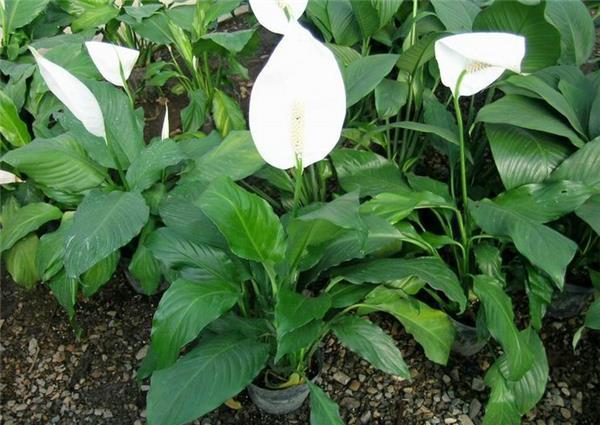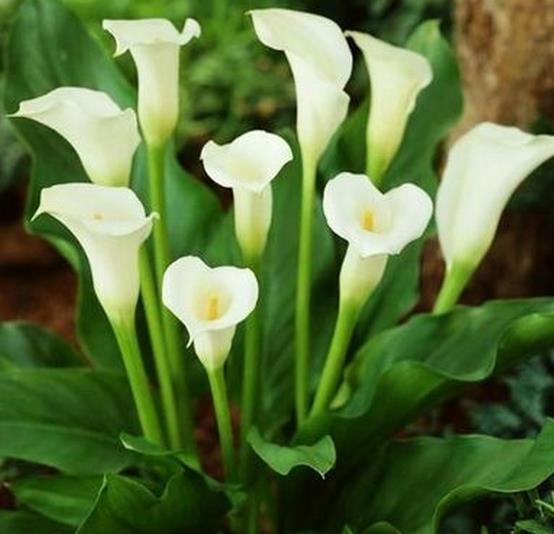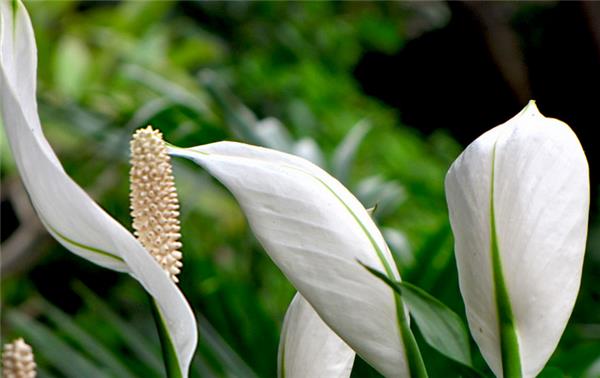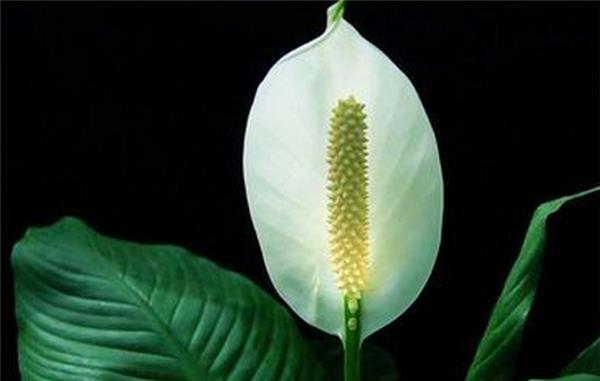Introduction and culture method of silver-bract taro, a plant with small white sail
The silver taro is green in four seasons and the flowers are white, giving people a cool and comfortable feeling. In addition, it is very suitable for indoor environment, few diseases and insect pests, and simple cultivation and management, so it is a popular indoor potted flower. Next, let's take a look at the knowledge of silver taro.

First, the introduction of silver taro
Taro is a perennial evergreen herb, perennial evergreen herb. The rhizome is short. Leaves leathery, long oval, tip long, 10-20cm long, 5-9cm wide, 70-120 cm high. The optimum temperature for the growth of Amorphophallus was 22-28 ℃. Keep the basin moist and shade in summer. The winter temperature is not lower than 8 ℃. Silver bract taro stem is short and stout, few tillers, plant height can reach more than 1 meter, is a large species in the taro series. The leaf is broad, oval, the petiole is stout, and the leaf color is dark green and full of luster. The bud is huge, such as a human palm, high above the leaf surface, and the flower lasts for nearly a month from blooming to Xie; the flower color is white at the beginning, then turns green, from shallow to deep, until withered; the flowering period is late spring and early summer.

2. Cultivation techniques of silver taro.
Key points of cultivation
1. Temperature
Silver-bract taro likes warmth, and the suitable temperature for growth is 22-28 degrees. Among them, it is 24030 degrees from April to September. From October to March of the following year, it is 182.21C. When the temperature is right, it can grow all year round. It is not hardy and the safe overwintering temperature is 10. The growth of the plant was blocked at low temperature, resulting in browning of the leaf edge and leaf tip, and in severe cases, the aboveground part was scorched and withered.
two。 Light
Like the semi-overcast environment, when the light is too strong, the color of the leaves will become dim and lose luster, but also lead to leaf tip and leaf edge scorch. From May to September, shade should be provided to cover 60% or 70% of the sun. The shade tolerance of white crane taro is extremely strong, it can grow under the weak light of 200 le, and it can blossom when the light is 500 le. But should not be too overcast, when the light is too dark, the plant growth is thin, the leaf is drooping, the leaf color becomes light, and it is not easy to bloom.
3. Watering
Silver-bract taro likes the moist soil environment and is not resistant to drought. during the growth period, there should be adequate water supply to keep the basin soil moist but not dry. But should not be too wet and stagnant water, when too much water, the leaves will bend and droop, the leaf color will be withered and yellow, and even produce rotten roots, watering should master "wet between dry and wet", and watering should be controlled in winter. Long-term low temperature and wet basin soil are easy to cause root rot and leaves withered and yellow.

4. ambient humidity
Like the humid environment, when the air is dry, the new leaves will become smaller, yellow, leaf tip, leaf edge scorched. Water should always be sprayed to and around the leaves to moist the environment, and the relative humidity of the air should be kept above 50%.
5. Fertilizer application
The plant grows rapidly and has a large number of tillers, so it needs more nutrients to grow well. Fertilizer combined with nitrogen, phosphorus and potassium should be applied every 1-2 weeks during the growing period to promote plant growth and flowering. Stop fertilizing in winter.
6. Turn the basin
Due to the rapid growth, the basin is turned once every 1-2 years, which can be carried out before sprouting in spring. The basin soil is required to be loose and well drained, so it is not suitable to be planted with clayey soil. The matrix can be prepared with rotten leaf soil, garden soil, peat soil, coarse sand or rice chaff ash and other materials.

Cultivation techniques
1. Breeding and seedling selection
Virus-free test-tube plantlets bred by bioengineering technology should be selected, with neat plant growth, strong seedlings, well-developed roots, fast growth after planting, and can be bred into a large number of high-quality commercial flowers.
two。 Preparation of basin soil
The cultivation of basin soil is the basis for the good growth of silver taro, so the requirement of preparing basin soil is higher. The ratio is: three parts of organic matter pond mud, or fertile soil, two parts of river sand, two parts of rotten mushroom dregs, one part of peat soil, one part of perlite, one part of rotten pig manure or dried chicken droppings, a total of ten parts are combined to form a loose, breathable, well-drained mixed potted soil.
3. Fertilizer application
When the early stage of silver-bract taro seedlings are 10 meters high and 20 meters high, they generally do not need to apply too much fertilizer, too much fertilizer, the leaves appear black stripes, rotten leaves, but not good. A small amount of 1% urea and 0.1% potassium dihydrogen phosphate foliar fertilizer can be used in the early stage of seedlings, and growth hormones can be added if possible, such as "Yemanbao" or "Aidoushou". The effect of foliar spraying is 5000 times of spray concentration and once every 15 days.
The above is the knowledge of silver taro. I hope I can help you.
- Prev

Introduction and culture method of plant tortoise shell with tortoise shell
Introduction and culture method of plant tortoise shell with tortoise shell
- Next

Introduction and culture methods of firecrackers and bamboos for you to pay homage to plants
Introduction and culture methods of firecrackers and bamboos for you to pay homage to plants
Related
- Wuhan Hospital Iron Tree Blooming Result Was Instantly Frightened by the Gardener Master
- Which variety of camellia is the most fragrant and best? Which one do you like best?
- What is the small blue coat, the breeding methods and matters needing attention of the succulent plant
- Dormancy time and maintenance management of succulent plants during dormancy
- Minas succulent how to raise, Minas succulent plant pictures
- What are the varieties of winter succulent plants
- How to raise succulent plants in twelve rolls? let's take a look at some experience of breeding twelve rolls.
- Attention should be paid to water control for succulent plants during dormant period (winter and summer)
- Watering experience of twelve rolls of succulent plants
- Techniques for fertilizing succulent plants. An article will let you know how to fertilize succulent plants.

